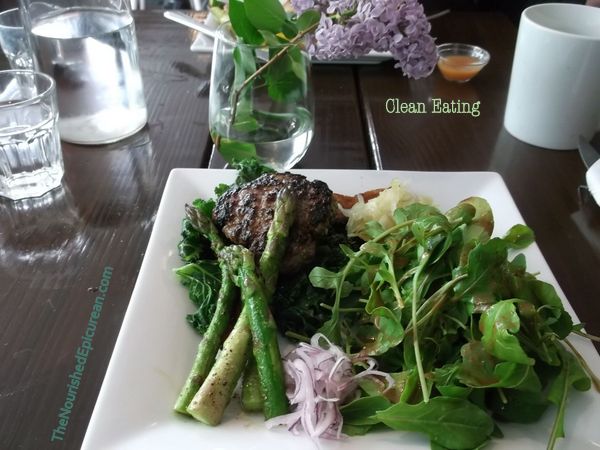I like to eat “clean” at restaurants. For me, this has two meanings. One is that the restaurant’s kitchen staff and servers practice an acceptable level of hygiene when preparing or handling food. The second concerns the food itself. Ideally, the edible inputs of my dish will be be fresh, seasonal, minimally processed, low in toxins (like low-mercury fish) and without antibiotics and growth hormones.
“We don’t dine out at trendy restaurants very much…because you just don’t know how many hands have touched (or assembled) the food on your plate,” a friend confided to me years ago—over dinner at a trendy restaurant.
She knew what went down in restaurant kitchens. Back then, she and her chef-husband owned a small, perennially popular restaurant in Greenwich Village.
Another “frequent diner” friend lamented catching the Norwalk virus from a restaurant server who had “over-handled” her food.
At the time, I was reviewing restaurants and enamored with the scene, the adventure, and the convenience of eating out regularly. I didn’t give my friends’ stories much thought.
Then, I had two bouts of severe food poisoning. In both cases, the culprit was a restaurant meal. And both episodes (in different years) were in October, the month that jumpstarts the cold and virus season.
Have you ever had a bad case of food poisoning? It certainly made me that much more conscious of restaurant hygiene.
I aim to eat clean in two ways. Click here for my strategies on how to eat healthy when dining out. And, to stay healthy, I pay attention to the following:
♦ Full disclosure. Does the restaurant have an open kitchen? I prefer open kitchens, which enable me to see how food is prepared and cooked—and to get a sense of overall cleanliness.
♦ Wash your hands! When you do, use hot, hot water. Regular hand-washing is one of the most effective ways of cold and flu prevention.
♦ Hands: off or on? Bare-hand contact with food increases risk of transmitting (and contracting) Norovirus. The server’s hands should be around the base of a glass (not the rim where your mouth touches the glass) when delivering any beverage—water, cocktail, wine—to you.
When I see a server about to set a glass of water down—their fingers around the lip of my glass—I will politely ask the server to pour me another glass of water with his hands at the base. You can also ask for an unopened paper-wrapped straw.
A server’s hands should also be on the plate—not in your food.
A few months ago, when a server at an upscale bakery chain in Manhattan arrived with my order, his fingers were touching my omelet. I sent it back immediately and explained why I would not eat it. When it happened yet again (same server), I did not leave him a tip and spoke with the manager about my hygiene concerns.
♦ Sick employees. It may seem obvious, but avoid eating food that is prepared or handled by a server or food worker who is sneezing, sniffling, coughing or swiping his hand across his nose. (I’ve seen this more than I care to remember with food handlers.)
How much does restaurant hygiene matter to you?


